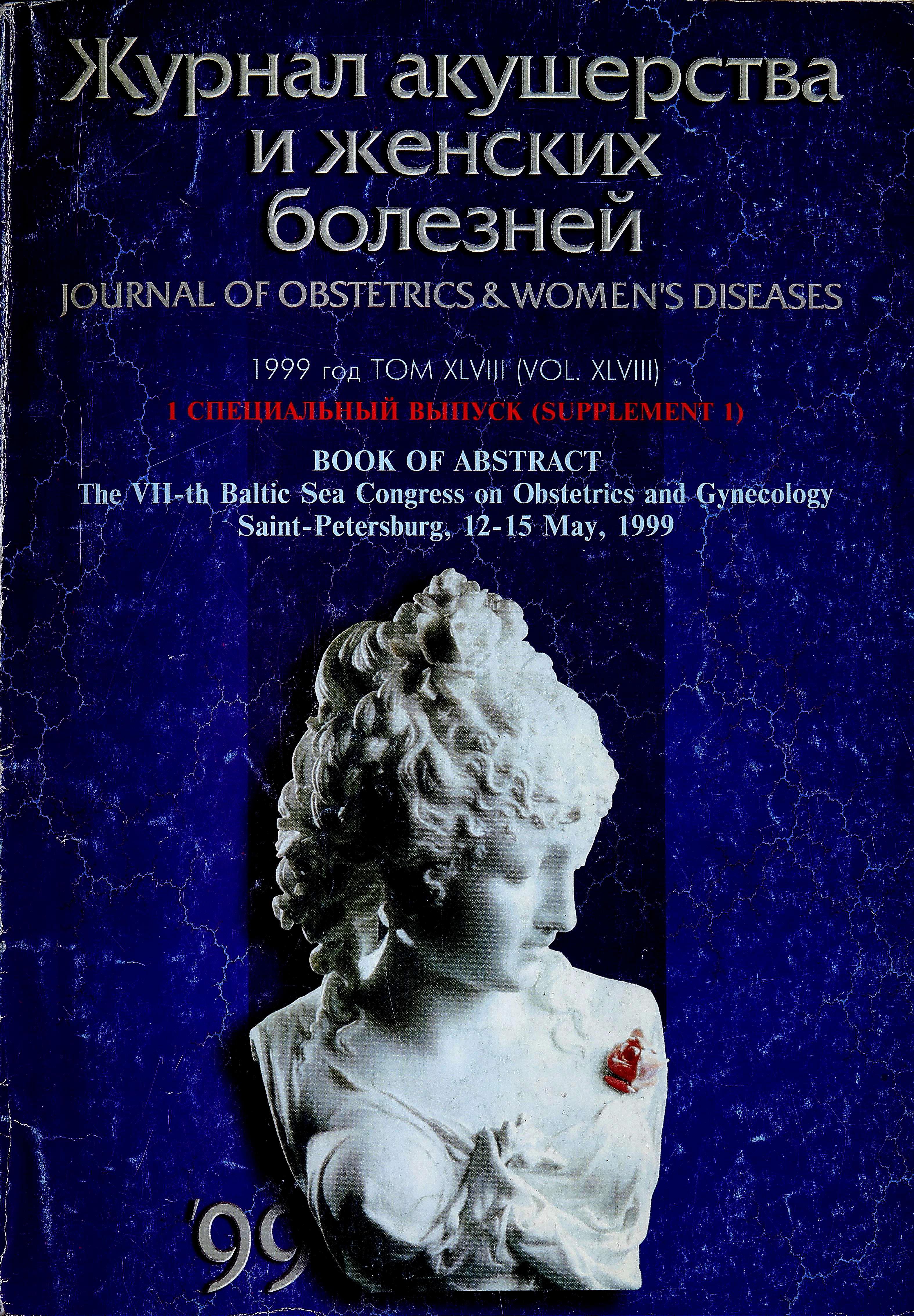The optimization of anesthesia in gestosis patients during labor
- Authors: Krasnopolsky V.I.1, Mazurskaya N.M.1, Shepatov V.V.1, Ermolaeva E.E.1, Logutova L.S.1
-
Affiliations:
- Moscow Regional Institute of Obstetrics and Gynecology
- Issue: Vol 48, No 5S (1999)
- Pages: 89-89
- Section: Articles
- Submitted: 17.02.2022
- Accepted: 17.02.2022
- Published: 15.12.1999
- URL: https://journals.eco-vector.com/jowd/article/view/101025
- DOI: https://doi.org/10.17816/JOWD101025
- ID: 101025
Cite item
Full Text
Abstract
With the purpose of optimization of anesthetization in gestosis patients during labor the parameters of central hemodynamic and cerebral blood flow has been investigated. The patients have been compared in anesthesiology methods during labor and deviated in 3 groups.
Keywords
Full Text
With the purpose of optimization of anesthetization in gestosis patients during labor the parameters of central hemodynamic and cerebral blood flow has been investigated. The patients have been compared in anesthesiology methods during labor and deviated in 3 groups. The group 1 included 27 patients with easy forms of gestosis, where intravenous interdiction of promedol has been used as anesthesia. The group 2 included 22 middle current gestosis patients with easy forms of gestosis, where intravenous continuous interdiction at calipsol 0,02 mg/kg of weigh during minete has been used as anesthesia. The group 3 included 46 hard current gestosis patients, with epidural anesthesia. The impedance rheocardiografy by Kubicek method and impedance rheoencephalography by Paleev has been used. Patients in group 1 before promedol had hyperkinetic type of blood circulation, cerebral blood flow has been sufficient. Patients of the group 2 outside of contraction previa these patients had hypocynetic type of blood circulation and the reduction of cerebral blood flow. During contraction previa these patients had the increase of cardiac evaluation volume, but angiospasm phenomenon presented even in the cerebral blood flow and cerebral vessels and has been sufficient. Patients of the group 3 had hypocynetic type of blood circulation. During anesthesiologic methods the most favorable parameters of hemodynamic presented in groups 1 and 3 where the volumes of average dynamic pressure and cerebral blood flow achieved normal parameters. Peripheral angiospasm in group 2 has not differed during labor. We recommend promedol anesthesia in patients with easy forms of gestosis and epidural anesthesia in patients with hard gestosis.
About the authors
V. I. Krasnopolsky
Moscow Regional Institute of Obstetrics and Gynecology
Author for correspondence.
Email: info@eco-vector.com
Russian Federation, Moscow
N. M. Mazurskaya
Moscow Regional Institute of Obstetrics and Gynecology
Email: info@eco-vector.com
Russian Federation, Moscow
V. V. Shepatov
Moscow Regional Institute of Obstetrics and Gynecology
Email: info@eco-vector.com
Russian Federation, Moscow
E. E. Ermolaeva
Moscow Regional Institute of Obstetrics and Gynecology
Email: info@eco-vector.com
Russian Federation, Moscow
L. S. Logutova
Moscow Regional Institute of Obstetrics and Gynecology
Email: info@eco-vector.com
Russian Federation, Moscow
References
Supplementary files







